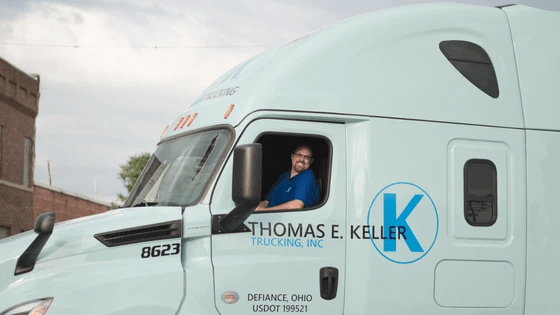

Ask any human resources representative and they will tell you: Having to hire and onboard new employees is a costly event, both in terms of actual financial resources but also in less tangible ones, such as time or productivity loss.
Labor usually exceeds 50 percent of a business’ operating budget. And heavy employee turnover can have an extremely negative impact on both the financial bottom line and the morale of the company. The logistics industry faces its own set of unique challenges when it comes to onboarding new drivers. A recent survey by the Upper Great Plains Transportation Institute found that the average cost of turnover per driver for these carriers was $8,234; with a range from $2,000 to $5,000. Reminder – that information is PER DRIVER. Most businesses can’t afford that. So, let’s take a look what those costs entail and what that can mean for the business.
Recruitment can be a tricky area to truly measure. Sometimes, employees within the organization want a chance to get behind the wheel. So, the majority of their cost would be training and testing. However, if the business is looking for more high level, experienced drivers, they will likely use advertising and paid recruiters. That can cost upwards of $50,000 or more depending on the size of the fleet and driver pool.
Training new drivers, experienced or not, can be major company expense. With experienced drivers, they still must learn how to operate equipment specific to the business as well as certain technology infrastructures. Brand new drivers require hours upon hours of schooling and training. Costs for training can vary greatly. Some require drivers to invest in their own education, but others offer their own driving schools. That in-house school often requires drivers stay for a certain amount of time to offset those costs.
In the logistics industry, time often means money. While the cost of training is one thing, onboarding new drivers can also mean costs in terms of entry and exit administration, fixed asset costs due to idle equipment, profit lost due to idle equipment and other costs including safety/insurance/legal, maintenance, and productivity loss. A less tangible aspect of losing a driver, particularly a good driver, is losing someone who understood your business. He or she knew where to go for help when they needed it and knew how to operate within the business infrastructure. You can’t put a true price on that.
All in all, the cost of acquiring and onboarding new drivers can be an expensive part of running a successful logistics company. However, with some planning, it can be a controllable one. While some attrition is unavoidable, companies can reduce it by putting a heightened focus on on retaining current drivers, keeping them healthy, and ensuring they feel like the valued, vital employees they are. That not only increases driver productivity and overall happiness, but will also cut down the unnecessary turnover cost to the business.
At Keller, we work hard to keep our employees happy, healthy and engaged at every level. Learn how we work to keep our drivers knowing how valued they are in our workforce.